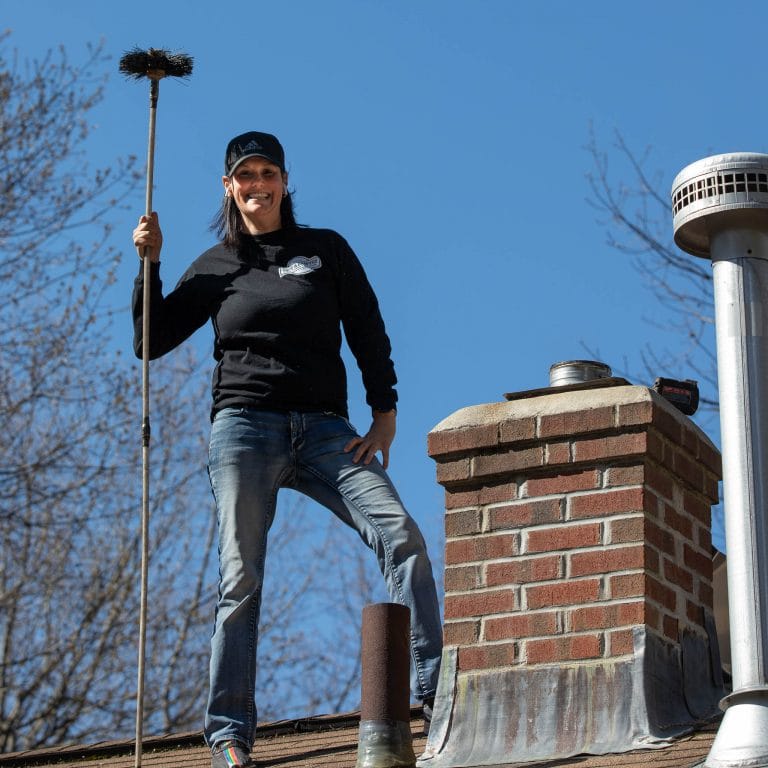Experience the Difference: Chimney Clean San Jose for a Cleaner, Safer Home
Experience the Difference: Chimney Clean San Jose for a Cleaner, Safer Home
Blog Article
Chimney Cleaning: A Step-by-Step Overview to Maintaining a Healthy Fireplace
Regular smokeshaft cleansing is an important component of this upkeep routine. By complying with these guidelines, you will discover exactly how to gather the needed tools, carry out an aesthetic evaluation, clear debris and accumulation, move the chimney, and finish the final actions for recurring upkeep.
Gathering the Necessary Devices
To begin the process of smokeshaft cleansing, the initial step is to collect all the required tools. Having the right devices at hand makes sure a efficient and secure cleaning procedure. The necessary devices for chimney cleansing include a chimney brush, a ladder, decline fabrics or plastic sheets, a flashlight, handwear covers, and a dirt mask.
The chimney brush is the main device utilized to get rid of soot and creosote accumulation from the flue - Chimney Sweep San Jose. It is important to choose a brush that matches the dimension and shape of your smokeshaft.
Ground cloth or plastic sheets are important for safeguarding the surrounding area from dirt and particles. They aid make and contain the mess clean-up simpler. A flashlight is important for checking the chimney's interior for any indications of damage or obstructions. Handwear covers are essential to shield your hands from soot and other damaging substances, while a dust mask helps protect against the breathing of debris.
Doing an Aesthetic Assessment

Utilizing a flashlight, carefully check out the interior walls of the chimney for any kind of signs of damage, such as cracks, loosened blocks, or mortar degeneration. These problems can jeopardize the chimney's architectural stability and position a severe safety risk. Additionally, check for any type of indications of water damage, such as discoloration or efflorescence, as this can show a leaky smokeshaft cap or flashing.
Following, examine the chimney flue for any kind of blockages. Seek the presence of nesting products, leaves, or particles that may have gathered over time (Chimney Sweep San Jose). These obstructions can restrict air movement, increase the risk of carbon monoxide gas build-up, and prevent the smokeshaft's capability to properly air vent smoke
Throughout the visual evaluation, pay very close attention to the smokeshaft crown, which is the top surface area that protects the chimney from moisture. Seek fractures or missing pieces in the crown, as these can enable water to enter the chimney and trigger considerable damages.
Clearing Debris and Accumulation
After finishing the aesthetic examination, the next action in smokeshaft cleansing entails clearing up debris and build-up to ensure the appropriate functioning of the fire place. In time, particles such as fallen leaves, branches, and animal nests can gather in the smokeshaft, obstructing the flow of air and triggering possible fire dangers. Additionally, the build-up of creosote, a tar-like substance, is a typical issue in chimneys. Creosote is created when wood or fossil gas are melted, and otherwise gotten rid of on a regular basis, it can cause smokeshaft fires.
A chimney brush, particularly designed for this function, is utilized to get rid of loose particles and creosote from the chimney wall surfaces. It is necessary to select a brush that matches the size of your smokeshaft to make certain reliable cleansing.
To begin, insert the brush right into the smokeshaft and move it up and down, rubbing the wall surfaces to dislodge any particles or creosote. As soon as the brushing is complete, utilize a vacuum cleanser or a chimney brush expansion to eliminate the dislodged debris from the fireplace.

Sweeping the Chimney
The sweeping of the chimney is a critical action in keeping a healthy fireplace. In time, review soot, creosote, and various other particles can collect in the smokeshaft, obstructing the circulation of air and potentially triggering a hazardous buildup of flammable products. Routine chimney sweeper not just ensures correct air flow but likewise avoids the threat of smokeshaft fires.
When it comes to smokeshaft sweeping, it is very recommended to hire a professional smokeshaft sweep. These experts have the understanding and devices necessary to securely and effectively eliminate the gathered particles from your chimney.
It is very important to note that the frequency of chimney sweeping depends on several elements, such as the sort of gas utilized, the amount of usage, and the kind of chimney. As a basic general rule, it is advised to have your smokeshaft swept and inspected at the very least annually.
Last Actions and Maintenance
To make certain continuous maintenance and optimal efficiency, it is necessary to implement normal maintenance practices and adhere to a comprehensive set of final actions for your fire place. After finishing the smokeshaft sweeping process, the primary step in the final maintenance is to examine the chimney cap and trigger arrestor. These parts avoid particles, animals, and rain from getting in the chimney. Inspect for any indications of damages or blockage, and clean or repair them if required.

Check the inside of the fire place for any signs of damage, such as cracks, loosened blocks, or damaged mortar. These concerns can impact the structural integrity and security of the fireplace. If any problems are found, consult an expert chimney move or mason to resolve them immediately.
Finally, take into consideration installing carbon monoxide detectors near the fire place and throughout your home. These tools can find the presence of this dangerous gas, supplying an early warning system in situation of a chimney breakdown. Regularly check and replace the batteries in these detectors to ensure their effectiveness.
Verdict
To conclude, complying with a step-by-step overview for smokeshaft cleaning is important in preserving a healthy fireplace. By gathering the essential devices, doing a visual examination, removing debris and build-up, and sweeping the chimney, house owners can ensure the security and effectiveness of their fireplace. Routine upkeep and cleansing will certainly aid protect against chimney fires and enhance air top quality in Related Site the home. It is necessary to prioritize smokeshaft cleansing as a part of overall home maintenance.
The necessary devices for smokeshaft cleansing include a smokeshaft pop over to this site brush, a ladder, drop towels or plastic sheets, a flashlight, gloves, and a dust mask.
A smokeshaft brush, specifically designed for this purpose, is used to remove loose particles and creosote from the smokeshaft walls. Routine chimney brushing up not only ensures correct ventilation yet additionally avoids the threat of chimney fires.
When it comes to smokeshaft sweeping, it is extremely suggested to employ an expert chimney sweep. After completing the smokeshaft sweeping process, the first action in the last upkeep is to check the chimney cap and stimulate arrestor.
Report this page